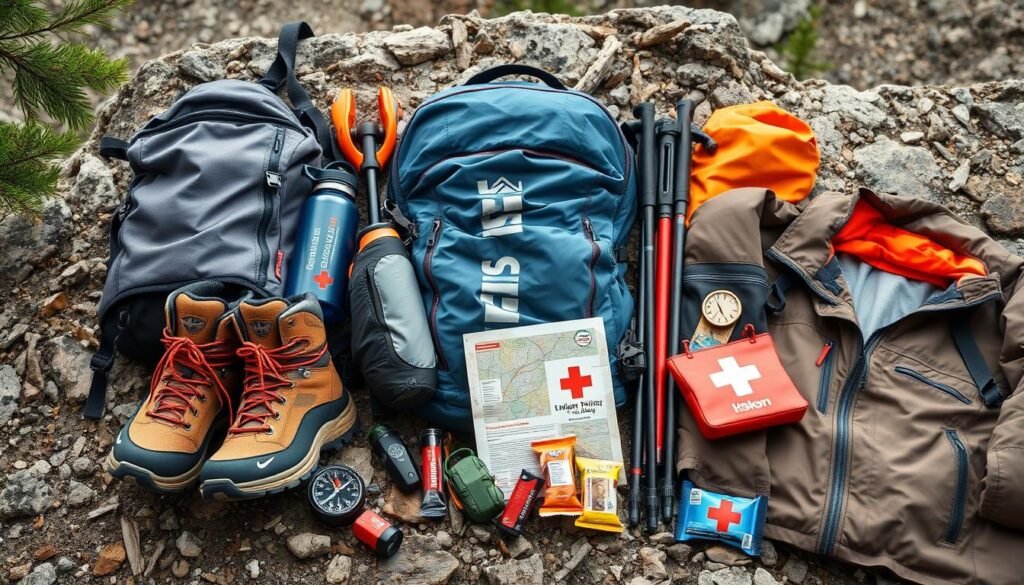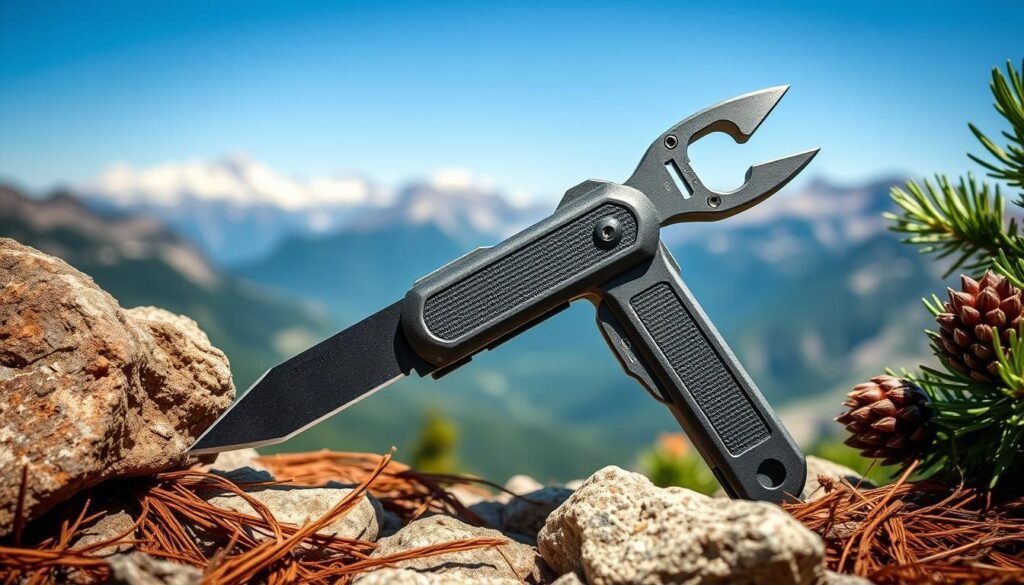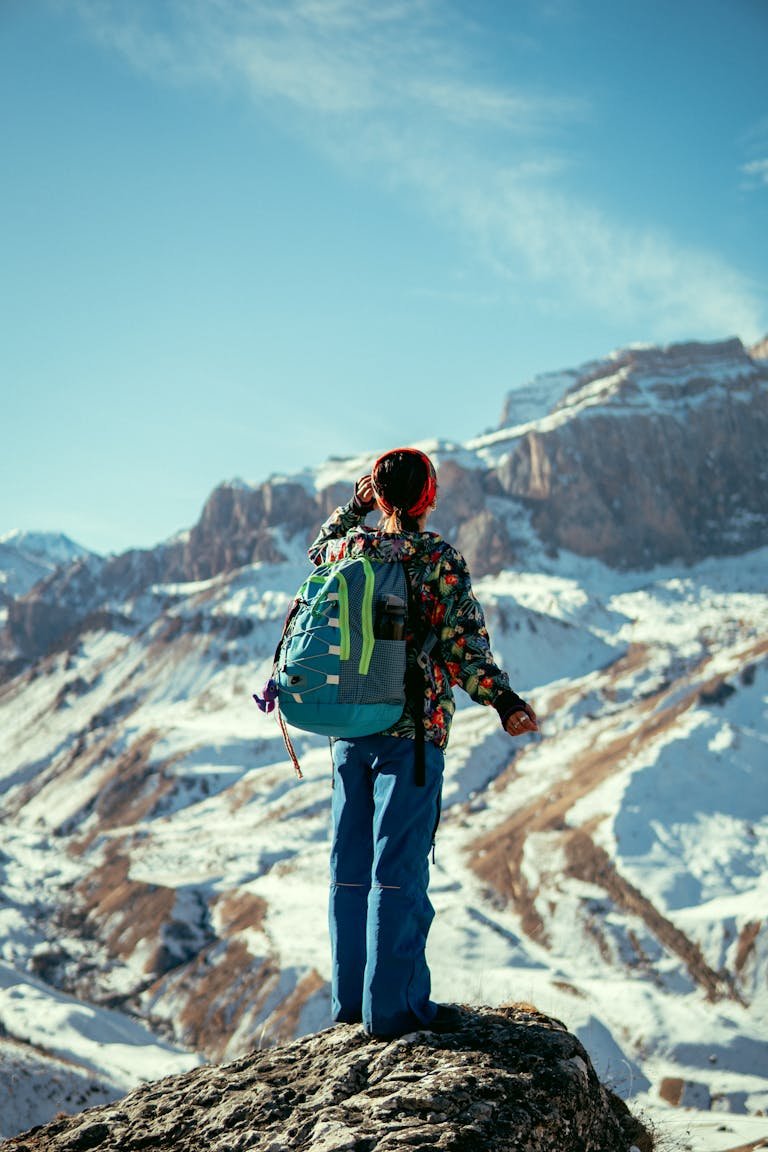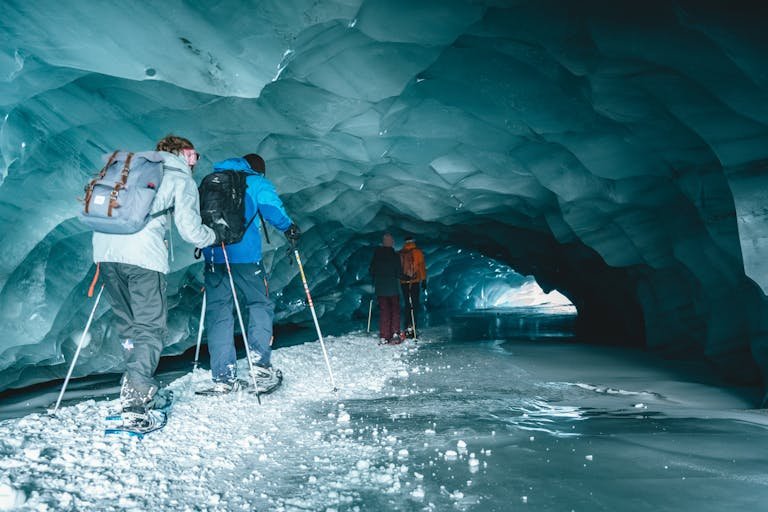Every year, 150 million Americans hit the trails for outdoor fun. But many don’t come prepared. Having the right gear is key for a safe and fun hike. The 10 essentials for hiking have been a must-have for decades.
By knowing and using these essentials, you’ll be ready to explore. You’ll make the most of your time outdoors.

The 10 essentials help you navigate and stay safe. They include tools for finding your way and keeping the sun off. These items make your hike better and give you peace of mind.
Whether you’re a pro or a beginner, the right gear is essential. It ensures a great outdoor adventure.
Key Takeaways
- Understanding the 10 essentials for hiking is crucial for a safe and enjoyable outdoor adventure
- Hiking gear, including navigation tools and sun protection, can enhance your hiking experience
- The 10 essentials for hiking provide a foundation for outdoor adventure and can help you stay safe on the trail
- Having the right hiking gear can make all the difference in your outdoor adventure
- Embracing your inner explorer and getting excited about your upcoming hiking experiences can lead to a more enjoyable and fulfilling outdoor adventure
- The 10 essentials for hiking are designed to help you navigate and stay safe on the trail
Understanding the 10 Essentials for Hiking: Your Gateway to Adventure
Going on a hike needs good outdoor preparation. Knowing the ten essentials makes your trip safer and more fun.
The History of the Ten Essentials
The Ten Essentials idea started with The Mountaineers in the 1930s. It was made to help hikers be ready for surprises.
Why These Items Matter for Your Safety
Every item in the ten essentials is key for hiking safety. They help with navigation and emergency needs, keeping you safe.
Modern Adaptations for Today’s Hikers
New technology has updated the list. Today’s gear is lighter and does more, making outdoor preparation better.
Navigation Tools: Never Lose Your Way
Going on a hike means you need good hiking navigation tools. You can choose old-school methods or the newest tech. The right gear keeps you on the right path.

A classic map and compass is a must-have for hikers. They don’t need batteries and help you understand where you are. Learning to use them well makes navigating easier.
GPS devices also track your location and show maps in real-time. Brands like Garmin and Suunto are favorites for their toughness and precision. You can also use smartphone apps for more navigation help.
- Map and Compass: Reliable and battery-free
- GPS Devices: Accurate and user-friendly
- Smartphone Apps: Convenient and feature-rich
Using both hiking navigation methods makes you ready for anything. Getting better at navigation makes you more confident. It also makes your hikes safer and more enjoyable, even in new places.
Illumination: Lighting Your Path to Success
Proper trail illumination is key for a safe and fun night hiking trip. Whether you’re on a familiar trail or discovering new ones, the right light makes a big difference.
Headlamps vs Flashlights
When picking between hiking headlamps and flashlights, think about these points:
- Headlamps: They let you keep your hands free, have adjustable beams, and are comfy for long walks.
- Flashlights: They’re versatile, easy to aim, and often brighter.
Battery Types and Duration
The life of your light depends on the battery. Rechargeable batteries are green, while disposable ones are reliable and don’t need charging. Make sure your light will last the whole hike.
Emergency Light Sources
Having backup lights is vital for unexpected moments. Glow sticks or extra flashlights can give you the trail illumination you need in emergencies. They boost your safety on night hikes.
Sun Protection: Shield Yourself from Nature’s Spotlight
When you’re out hiking, the sun is always there. Good hiking sun protection is key for comfort and health. Too much sun can cause sunburn and raise your risk of skin cancer. So, it’s important to protect yourself.
Here are some ways to keep safe:
- Sunscreen for outdoors: Pick a broad-spectrum sunscreen with SPF 30 or higher. Put it on all skin that’s not covered and do it again every two hours.
- UV-resistant clothing: Wear light, long-sleeved shirts and pants made from fabrics that block UV rays. They act as a shield against harmful sun rays.
- Hats: A wide-brimmed hat can protect your face, neck, and ears from the sun.
- Sunglasses: Use sunglasses that block 100% of UVA and UVB rays to protect your eyes.
Choosing the right UV-resistant clothing is easy. Look for clothes with a UPF rating. The higher the UPF, the better the protection. Also, light-colored clothes reflect sunlight and keep you cool.
Remember to use sunscreen for outdoors when hiking. Keep it in a waterproof bag to stop it from melting. Applying sunscreen often is crucial for good sun protection.

| Sun Protection Item | Benefits | Tips for Use |
|---|---|---|
| Sunscreen for outdoors | Protects against UVB and UVA rays | Apply 15 minutes before sun exposure and reapply regularly |
| UV-resistant clothing | Provides a physical barrier against the sun | Choose fabrics with a high UPF rating and long sleeves |
| Hats | Shields face, neck, and ears | Opt for wide-brimmed styles for maximum coverage |
| Sunglasses | Protects eyes from harmful rays | Select sunglasses with 100% UVA and UVB protection |
First Aid Supplies: Your Personal Rescue Kit
It’s crucial to have a hiking first aid kit for any outdoor trip. It helps you deal with small injuries and emergencies. This makes your trail safety better.
Essential Medical Supplies
Make sure your kit has these basic items:
- Adhesive bandages
- Antiseptic wipes
- Medical tape
- Scissors and tweezers
- Elastic bandages
- Pain relievers
Medication Considerations
Don’t forget to pack any personal meds you might need. Make sure you have enough and keep them in their original packaging. This makes them easy to identify.
First Aid Knowledge Basics
Knowing how to use your first aid kit is key. Spend time learning basic wilderness first aid skills. This prepares you for any unexpected situations on the trail.
Tools and Repair Equipment: Be Your Own Trail Mechanic
Having the right tools on your hike can make all the difference. A reliable multi-tool for hiking is essential. It offers functions like cutting, screwing, and opening bottles all in one compact device.
- Multi-Tool for Hiking: Versatile and portable for various tasks.
- Duct Tape: Perfect for quick hiking gear repair on the spot.
- Cordage: Useful for setting up shelters or securing equipment.
- Repair Kits: Include patches and adhesives for emergency fixes.

Being prepared with these tools empowers you to handle unexpected issues. This ensures your adventure stays on track. Whether it’s a torn backpack strap or a broken tent pole, these items provide the means for effective emergency fixes.
| Tool | Purpose | Example Brands |
|---|---|---|
| Multi-Tool for Hiking | Versatile functionality for various repairs | Leatherman, Gerber |
| Duct Tape | Quick fixes for gear and clothing | Gorilla Tape, 3M |
| Paracord | Setting up shelters or securing items | Greenman, Tactix |
| Repair Kits | Patching and adhesive solutions | Gear Aid, Repair My Toiletries |
Fire Starting Materials: Mastering the Element
For hikers, having the right fire starting materials is key. They help you stay warm and cook meals outdoors. Knowing what to use keeps you safe and comfortable on your trips.
Waterproof Matches and Alternatives
Waterproof matches, like those from UCO, are a must-have for hikers. They work well even when it’s wet. Windproof lighters and fire starters like ferro rods are good backups when matches don’t work.

Natural Tinder Sources
Finding natural tinder is a valuable skill for wilderness fire safety. Look for dry materials like pine needles, dry grass, and birch bark. These ignite easily and help keep your fire going, ensuring warmth when needed.
Fire Safety Protocol
Always follow fire safety protocols to protect the environment and yourself. Clear a safe area for your fire, keep it small, and never leave it unattended. Extinguish the fire completely with water and ensure no embers remain, promoting responsible fire use in the wilderness.
Shelter Systems: Your Home Away From Home
When you’re hiking, having a good emergency shelter for hiking is key. It helps when you need to stay overnight or when the weather changes suddenly. Knowing your options keeps you safe and comfy.
Bivy sacks are light and small, great for solo hikers who want to carry less. Tarp shelters, however, are flexible and can be set up in many ways. They’re good for different places and groups.
- Bivy Sacks: Ultra-lightweight, easy to carry, suitable for solo use.
- Tarp Shelters: Versatile setup options, can accommodate multiple people, offers good protection against elements.
- Lightweight Tents: More spacious, better protection from wind and rain, easy to set up.
Choosing the right shelter depends on your hiking style, the environment, and the weather. Think about the weight, how easy it is to set up, and how well it protects you.
“A good shelter is your sanctuary in the wild, providing safety and comfort when you need it most.”
Being ready with the right shelter means you can face unexpected situations with confidence. It makes your hiking trips safer and more fun.
Nutrition and Hydration: Fueling Your Adventure
Staying fueled and hydrated is key for a great hike. Good hiking nutrition keeps your energy up and your body working well.
Water Filtration Methods
Clean water is vital. Here are some top water purification for hikers:
- Purification Tablets: They’re light and simple to use.
- Portable Filters: They get rid of bacteria and protozoa well.
- UV Purifiers: They use sunlight to kill off pathogens.
Energy-Dense Food Options
Choosing the right trail food is important. Go for foods that give lots of energy but are light:
- Nuts and dried fruits
- Energy bars and gels
- Beef jerky or other dried meats
- Nut butters
Emergency Rations Guide
Always have extra food ready for unexpected delays. Here’s a guide to packing good emergency rations:
| Food Item | Benefits | Shelf Life |
|---|---|---|
| Granola Bars | High in calories and easy to carry | 12 months |
| Dehydrated Meals | Lightweight and easy to prepare | 24 months |
| Trail Mix | Provides a mix of nutrients and energy | 6 months |
| Peanut Butter Packets | Rich in protein and fats | 18 months |
Extra Clothing: Dressing for Success and Safety
Wearing the right outdoor clothing is key for a safe and comfy hike. A good hiking layering system helps you adjust to weather changes. It keeps your body temperature just right.
Layering Techniques
A good hiking layering system has three layers: base, insulating, and outer. Begin with moisture-wicking base layers to keep sweat off. Then, add insulating layers for warmth. Finally, wear a waterproof outer layer to shield you from the weather.
Weather-Appropriate Fabrics
Choosing the right fabrics is vital for all-weather hiking gear. Wool and synthetic blends are great for keeping warm and drying fast. Breathable fabrics help control your body temperature when you’re active.
Emergency Clothing Items
Don’t forget to pack important emergency clothes, like a lightweight rain jacket and extra socks. These all-weather hiking gear items are crucial for sudden weather changes. They help keep you dry and warm.
Conclusion: Embracing the Trail with Confidence
Preparing for a hike is more than just packing gear. It’s about setting yourself up for a memorable journey. With thorough preparation, every step you take is safe and enjoyable. Planning your outdoor adventure carefully lets you navigate trails with ease and confidence.
Each of the ten essentials is crucial for your outdoor adventure planning. From navigation tools that keep you on track to first aid supplies that provide peace of mind, being well-equipped enhances your trail safety. These tools are not just items; they are your companions on the path to exploration.
Embracing these essentials means you can focus on the beauty of nature and the thrill of discovery. By prioritizing trail safety and being prepared, you empower yourself to take on new challenges and enjoy the great outdoors fully. Start planning your next hike today, keeping these essentials in mind, and embark on adventures with confidence.
FAQ
What are the 10 essentials for hiking?
The 10 essentials for hiking include a map and compass, and tools like a GPS device. You should also have a headlamp or flashlight and extra batteries. Sun protection items like sunscreen, a hat, and sunglasses are important.
Don’t forget a first aid kit, a knife or multi-tool, and fire-starting materials. A shelter, such as a tent or bivy sack, and supplies for nutrition and hydration are also key.
Why is carrying a map and compass important on a hike?
A map and compass are vital for navigating, even with GPS devices. They don’t need batteries and work well in areas with no signal. This ensures you stay on track during your hike.
How do I choose the right hiking gear for my trip?
Choosing the right gear depends on your hike’s duration, terrain, and weather. Look for lightweight, durable items that keep you safe and comfortable. This includes moisture-wicking clothes, sturdy shoes, and essential tools like a good backpack and hydration system.
What should I include in my first aid kit for hiking?
Your first aid kit should have bandages, antiseptic wipes, and pain relievers. Don’t forget blister treatment, personal medications, a multi-tool, and emergency blankets. Tweezers, tape, and scissors are also useful for various first aid needs.
How can I ensure I stay hydrated during a long hike?
Staying hydrated is crucial for energy and preventing heat issues. Carry enough water and consider a hydration reservoir or bottles. Also, bring a water filter or purification tablets to safely refill from natural sources.
What are the best sun protection strategies for hikers?
Good sun protection includes using sunscreen with at least SPF 30, wearing UV-resistant clothes, and a wide-brimmed hat. Polarized sunglasses are also key. These steps help prevent sunburn and long-term skin damage while enjoying the outdoors.
Can you explain the importance of having a reliable fire-starting method?
A reliable fire-starting method is crucial for warmth, cooking, and signaling in emergencies. Carry waterproof matches, a sturdy lighter, or a fire starter kit. Knowing how to use these tools safely ensures you can start a fire when needed, improving your safety and comfort.






